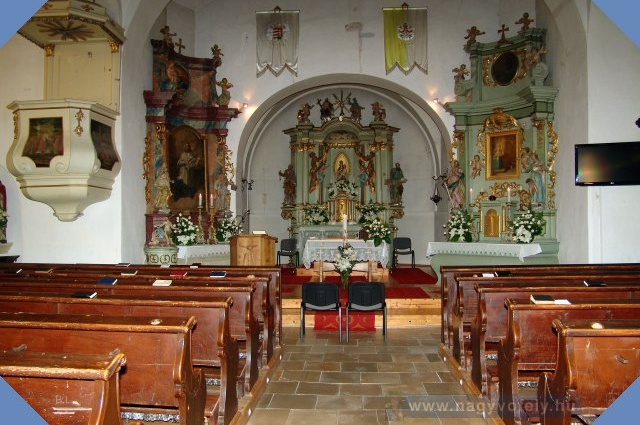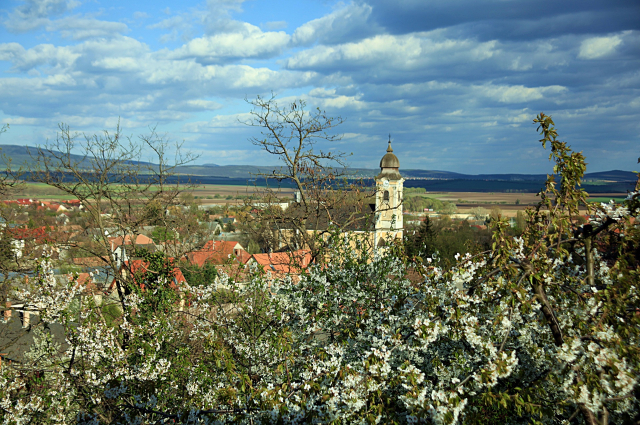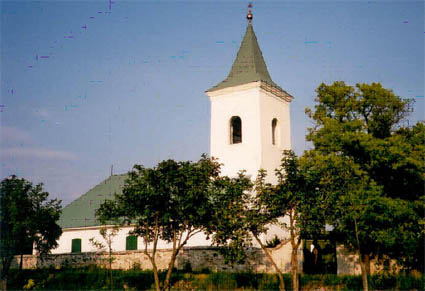
Rossztemplom (Ruined Church)
The small church built around 2 km northeast of today’s village could once have been the parish church.
The architectural relic located on the Ruined Church path guides visitors back to the Middle Ages; construction dates back to the Arpad era.
The Roman-style, single-nave church from one single period must only have been in use for a short time, as it did not survive the Turkish occupation, according to architectural findings. A semicircular shrine (apse) is attached to the rectangular layout nave, but its ascending walls have crumbled in several places. The still standing walls are 5-6 meters tall. One special feature of the single-nave church is constituted by the two quarter-circular closed recesses in the two walls opposite the nave, both of which have a side altar. Their imprint or foundations emerged during excavations. The archaeological excavation and partial restoration of the ruins subject to monument protection were carried out in 2000, the millennium year.
ROSSZTEMPLOM (RUINED CHURCH, Arpad-era church ruins)
Address: H-2073 Tök, Rossztemplom-dűlő (Ruined Church path)
GPS: 47.34250, 18.45107
Similar results
Church in the name of the Virgin Mary
2051 Biatorbágy, Dózsa György út 8.The settlement of Torbágy was completely depopulated – similarly to the surrounding villages – during the Turkish occupation.
MoreBaroque parish church
Zsámbék, 2072 Petőfi Sándor utca 1.The single-nave Roman Catholic church with a single tower built in Baroque style stands on the corner of Magyar utca and Petőfi...
MoreCalvinist Church
2091 Etyek, Vörösmarty Mihály u.The late baroque church of 1839 in the parish - a major diocesan support - was rebuilt; it reached its present shape of the...
MoreCatholic church
2086 Tinnye, Bajcsy-Zsilinszky u. 2.The church dedicated to St. Anne and built in late Baroque style in 1797 is a significant relic of the over 700-year-old...
More


